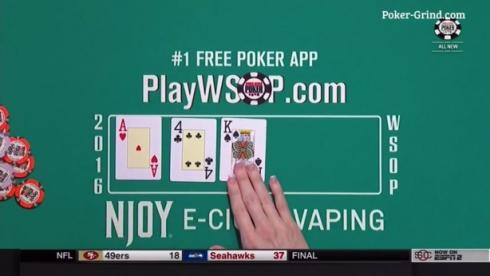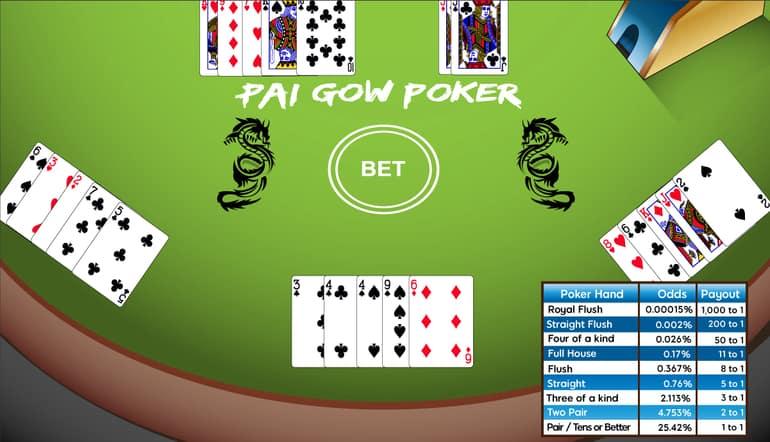Table Of Contents
- At real money tables, and in all poker tournaments or events, fair and ethical Poker Play is expected and required of all our players. Any player/s found not adhering to the stated or unstated rules of play or conducting play in an unethical manner, will have their account closed, their funds confiscated and won’t be allowed to join the.
- (An example of a full raise is on a $20 betting round, raising a $15 all-in bet to $35). Poker rules, poker strategy articles, poker magazines, poker tools and poker training resources.
- Texas Hold’em Poker Basic Instructions 1. Texas Hold’em can be played with a few as two players, or as many as ten, at a single table 2. The game begins with two players, left of the dealer, placing an initial bet.
Other Poker Game’s Rules:
Poker Betting Rules. Unless explicitly stated otherwise, a player must be dealt at least one hand for bets on that player to stand. In the event of a player not being dealt a hand then bets on that player will be declared void. Pre-Event Betting will generally be available until the first hand has been dealt. In-Game betting may subsequently be.
Learning how to play poker should not be difficult. If you want to understand why so many people love this game, this beginner's guide to the rules and the basics of poker is all you need.
Poker is a simple game to learn, but the poker rules can be challenging for a complete beginner.
But don't let that put you off. It is not hard to learn how to play poker, and you can move from the basics of the game to the tables of the top online poker sites in no time.
Here's everything you'll learn in this guide on how to play poker:
- And lots more
Before you move to the 'practical' side of this guide on how to play the most popular variants of this game, you need to learn the basics of poker.
When most people say they want to know 'how to play regular poker,' they imply that they want to learn the basics of Texas Hold'em.
Texas Hold'em is (by far) the most popular poker game out there and it's the one you find at every online poker site.
But that's just the tip of the iceberg. With so many poker variants to play online and offline, the only proper guide on how to play poker for dummies is the one that gets you access to all the best games out there.
Not just to the most famous one.
Many poker rules are consistent from game to game, although among the dozens of variants such as Texas hold'em, Omaha, and seven-card stud you will find some ket differences you need to kno.
Let's have a quick look at the poker rules of the most played poker games online:
How to Play Texas Hold'Em
| Game | Texas Hold'em |
| How Many Players | 2-10 |
| Poker Rules | How to play Texas hold'em |
Also called the 'Cadillac of Poker,' Texas hold'em is the one you are going to play over and over again.
This is the most popular poker game online and it is also the one you are most likely to play with our friends in your next home game.
Whether you play it in the form of a tournament or as a ring-game, the basic poker rules and the hand rankings don't change.
> Discover how to play Texas Hold'em
How to Play Omaha Poker
| Game | Omaha Poker |
| How Many Players | 2-10 |
| Poker Rules | How to play Omaha |
| Where to Play | Top poker sites |
The second-most popular poker variant. Omaha poker finds its roots in the game of Texas Hold'em, although the rules of the two games are slightly different from each other.
Many players find learning how to play poker Omaha to be the natural step to take after they have successfully mastered the basics of Texas Hold'em.
In the poker rules page dedicated to the game, you find the perfect beginner's guide to moving your first steps in the world of Omaha.
> Learn how to play Omaha poker
How to Play Seven-Card Stud
| Game | Seven-Card Stud |
| How Many Players | 2-8 |
| Poker Rules | How to play 7-card Stud |
| Where to Play | Top poker sites |
Before Texas hold'em became king, anyone who wanted to learn the basic poker rules and how to play poker had to go through the game of seven-card stud.
As the name suggests, this is a variant of stud poker. 7-card stud is also the 'S' game in the H.O.R.S.E. poker — but if you are still learning how to play poker, it's probably too early for you to jump on that.
> Discover how to play seven-card stud poker
Other Poker Rules to Learn
If you want to go deeper and you want to learn how to play even more poker games, PokerNews is the right site for you.
Pick one poker variant to learn from the list that follows and find out how to play some of the most exciting and lesser-known poker games out there!
Use these guides to learn how to play poker and master not only the most 'obvious' games like Texas hold'em bu also all the other different variants out there.
In our guides for beginners, you find the official poker rules, the basic strategy tips, and the hand rankings — because knowing how to calculate points is key if you want to win at poker.
Common Traits of Most Poker Rules
The Value of Poker Hands
One element used in most poker variants is the system of hand rankings.
The highest ranked hand is a Royal Flush (five cards of the same suit, ranked ace through ten), followed by a Straight Flush (five cards of the same suit of consecutive ranks).
The third-best combination is the Four-of-a-kind, which is then followed by the Full House (three of a kind plus one pair), the Flush, the Straight, the Three-of-a-kind, Two Pair, One Pair, and High Card or no pair.

When a hand reaches the showdown, the player with the highest-ranked hand wins the pot.
That's true of Texas hold'em, pot-limit Omaha, seven-card stud, and five-card draw.
Of course, in 'lowball' games like razz or deuce-to-seven triple draw, the hand rankings are turned upside down and the 'worst' hand according to traditional hand rankings is the winning one.
Poker Hands Ranking
- Royal Flush10JQKA
- Straight
Flush56789 - Four Of
A Kind3333K - Full HouseJJJKK
- Flush2459K
- StraightA2345
- Three Of
A Kind45777 - Two Pair499KK
- One Pair3QK1010
- High Card248QK
Poker Betting Guide

Suggested Readings
- Poker Hands Chart: The official classification of all poker hands with a free pdf to download and print.
- What Beats What in Poker: the perfect starting guide to learn how to count points in poker and discover the real value of each hand.
Blinds and Ante Bets
Games like hold'em and Omaha feature small and big blinds, so called because they are 'blind' bets players have to make before they are dealt any cards.
Meanwhile stud games usually use 'antes', which also involve players putting chips in the middle before the hand begins.
From there players bet more as the hand progresses, thereby creating larger pots.
Limit vs. No Limit Poker Games
Some games are played with no-limit betting, which means players can bet as much as they like at any point in the hand, including going 'all in.'
Limit Poker Betting Rules
Pot-limit betting means that the current size of the pot creates an upper limit on how much a player can bet.
Games that are played with fixed-limit betting have predetermined amounts from which players cannot vary when they make their bets and raises.
The Action
There are other terms that tend to be used in all different poker games, including many having to do with the actions you perform when playing.
When the action is on you, you can:
- Check: Decline to bet
- Fold: Withdraw from the hand, if someone else has bet already
- Bet: Place a wager on the table
- Raise: Add more chips by matching your opponent's bet and putting in a greater amount.
- Call: Match the bet of your opponents to stay in the hand and continue to play.
All of those terms are an important step in your journey to learn how to play poker since they tend to come up in all poker variants.
The Betting Rounds
In games with community cards like hold'em and Omaha (also sometimes called 'flop games'), the betting rounds are referred to as:
- Preflop: The bets made before any community cards are dealt
- Flop: The bets made after the first three community cards are dealt)
- Turn: The bets made after the fourth community card
- River The bets made after the fifth and last community card.
Suggested Readings
- How to bet in poker: a beginner's guide to betting in Texas hold'em.
- Texas hold'em betting tips: This short article gives you some actionable tips to learn how to play poker with your stack of chips.
The Table Stakes
One other poker rule common to just about every variant of the you'll play – whether you are playing live poker or online poker – is one called 'table stakes.'
Table stakes means that once a hand begins, you can only bet whatever amount you had on the table to begin the hand and are not allowed to add anything more during the hand as it plays out.
If you only have $100 on the table to begin a hand, you can't pull out your wallet and add more halfway through the hand – you can only play out the hand with whatever you had to start.
Practice Poker Online for Free
Now that you know the basic poker rules and you have links to go back to your poker guides when you need to, it's time to look for the best websites to practice poker online.
Don't start to play poker for real money right away. Try out the games for free first. That's the only way to discover if you have really learned how to play poker.
Looking for a site to practice online poker for free?
Don't miss the updated list of the best free poker sites in 2020!
There are countless options to give the game a test run, but the best way is to try out the real deal.
Sign up for a poker account with one of the big online poker rooms and give the freerolls a try.
That way, you can practice poker online without any risk; you're not wagering any money.
And if you want to try out cash games instead of tournaments, all major poker sites online have so-called play money tables.
That way you can practice the game, learn the rules, and figure out how the software works, readying yourself for the big stage.
Register a free gaming account and test your poker knowledge in the next freeroll!
All-In Rules in Poker
The first thing to remember is that no player can ever be forced out of a hand because they can’t match a bet. Instead, they can always go all-in.
The second rule follows on from this to make things fair for the bigger stacks. In an all-in situation, a player with a shorter stack can never win more than the amount of their stack from each other player in the hand.
If someone bets chips that no other stack can match, then these are returned to the bigger stack right away. If there are chips that some but not all players can match, then these are put into a side pot.
How Betting Works In Poker

A side pot can be contested only by players who paid into it, but the main pot can be won by anyone (because everyone paid into it).
Texas hold ‘em all in rules can seem complicated at first – especially if there’s more than one player involved. But once you have experienced a few different all-in scenarios you will soon get the hang of it.
Betting Rules for an All-In Situation
In no limit Texas hold ‘em, any player can go all-in when it’s their turn to bet. You can only bet the chips you have in front of you – your table stake.
All-ins are permissible in tournament and cash games. They are very common in the later stages of tournaments, when the high blinds mean it is often mathematically correct to push all-in with seemingly weak hands.
The easiest way to learn how all-in situations work in poker is to look at a few examples. It’s best to look at the simplest all-in scenario first: the heads-up all-in between just two players. Then we will look at the slightly more complex multi-way pot scenario.
Heads-Up All-In Rules
Let’s imagine there are two players, Andy and Barbara. Andy’s chips are worth 100 big blinds (bb) and Barbara’s are worth 50bb.
Even if Andy bets 100bb – twice her stack – Barbara can still call by going all-in. No other players call, and so 50bb are returned to Andy immediately. He bet 100bb, but only 50bb of that was matched so the excess is returned to him. The same is true if he bets 99bb or any amount above Barbara’s stack size.
Neither Andy nor Barbara can make any further actions. Their hole cards are shown and the community cards are dealt out. Whoever wins gets the full pot, which would be 101.5bb (1.5bb from the blinds, 50bb from Andy and 50bb from Barbara).
If Barbara was to go all-in first and Andy called, the situation would be exactly the same. Having chips left over doesn’t mean Andy can bet, because there would be no point!
Multiway All-In Rules
The basic principle is the same with more players, but with the addition of side pots for any chips that only some players can match.
Let’s re-run the scenario but this time add a third player, Chuck. He has a stack of 75bb, so he’s in between Andy’s 100bb and Barbara’s 50bb.
Just like Barbara, Chuck can only call Andy’s 100bb bet by going all-in. However, he can match 25bb more of Andy’s bet than Barbara, who can only match 50bb. This additional 25bb from each player goes into a side pot – a total of 50bb. Only Chuck and Andy are eligible to win this money, because only they paid into this side pot.
The main pot will be 151.5bb (1.5 from the blinds and 50 each from Andy, Barbara and Chuck). Nobody can take any further action. The hole cards are revealed and all the community cards are dealt.
It’s best to think of the two pots as independent. We look at who has the best hand out of Andy, Barbara and Chuck to see who wins the main pot of 151.5bb. Then we look at who has the best hand out of Andy and Chuck to see who wins the side pot of 50bb.
If Chuck goes all-in first, nothing changes. Andy has chips left over, but he can’t take any actions because there would be no point to it. The others have no more chips to bet and they cannot be bluffed out of the hand.
If Barbara goes all-in first, things are slightly different. Chuck and Andy can call without going all-in themselves. This means they can take further actions on the flop, turn and river. Any bets they make will go into a side-pot. In this case, no hole cards are revealed until showdown.
In this situation, either Chuck or Andy can force the other to fold by betting and raising. If either folds, then they are out of the hand – not just the side pot. So it’s quite possible to bluff your way to winning the side pot, only to lose the main pot – anyone who is only in the main pot is all-in and will always see the hand out to the end.
As you add more players, the number of side-pots can increase.